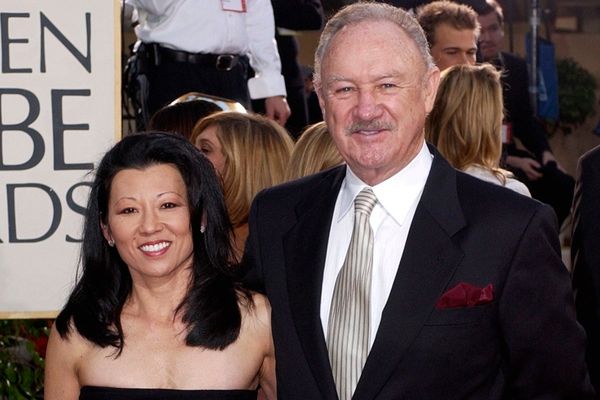
Climate predictions in Florida, for the most part, make pretty grim reading. Rising oceans threaten to submerge most of the state by the end of the century, and soaring temperatures could make it too hot to live here anyway.
But new research by a coalition of prominent universities paints a more upbeat picture of Florida’s future as a thriving state for humans and wildlife, with natural resources harnessed to mitigate the worst effects of the climate emergency generally, as well as extreme weather events such as hurricanes and floods.
Such a prosperous tomorrow, the authors say, can only follow essential preparatory work today.
One key element, an 18m-acre swath of protected land called the Florida wildlife corridor, is already mostly in place, and will spearhead Florida’s climate resilience if properly managed and allowed to evolve, the researchers believe.
“We are very blessed in Florida to have the opportunity to have a land conservation project as ambitious as the wildlife corridor, and right now a little over 30% of the state is permanently conserved,” said Joshua Daskin, conservation director of Archbold Biological Station, an ecological research non-profit that compiled the report in collaboration with five universities from Tallahassee to south Florida.
“Without decades of work by conservationists, by state agencies, by non-profits, by landowners, we wouldn’t have the opportunity to reap the benefits of resilience to fires, storms, floods and heat.”
The study makes a number of recommendations for the corridor, a private-public partnership finally approved by the Florida legislature in 2021 after years of planning, with a vision for a single, unrestricted wildlife passageway running hundreds of miles from the southern Everglades to the Alabama border.
Rich in flora and fauna, and home to almost all of Florida’s land-based imperiled species such as panthers, black bears and bald eagles, the corridor was designed to be primarily a conservation project, with little focus on climate resilience.
Yet the report notes that two-thirds of Florida’s floodplains, covering about 10m acres, are contained within the corridor, bringing potentially “billions of dollars’ worth of flood hazard protection” if they remain undeveloped.
Another cited example is how the conservation of large, connected open spaces such as those provided by the corridor limits the exposure of people and property to wildfire, although the report concedes managed burns would still be necessary to further reduce the risk and preserve wildlife habitats.
Protecting large acreages of forests and woodlands in perpetuity preserves substantial numbers of trees that lower carbon dioxide levels and slow global warming.
With an estimated 90% of Florida’s population of 22 million living within 20 miles of the corridor, and with up to another 1,000 people arriving every day, the authors say residents current and future have a vested interest in, and will be dependent on, what the experts call a “credible motivation” of its protections.
“Not everybody is first and foremost concerned with protecting panthers, or Florida scrub jays, or other wildlife, and that’s understandable. We all have our lives to live,” Daskin said.
“But people are concerned about protecting their property, protecting their wellbeing and protecting their economies as our climate changes. So the corridor, and the resilience benefits this study identified, really resonates with people for lots of different reasons.”
One important concern, Daskin said, is how development will be managed to accommodate the large numbers wanting to make Florida their home.
“What makes sense in more places, whether in the corridor or outside, is clustered development, building at somewhat higher densities,” he said.
“Instead of everyone getting a five-acre ranch, as is happening in some parts of the state, we’re talking about walkable, livable communities that reduce the need to drive everywhere and the need to commute as far as we do today. Research shows this makes people’s lives healthier, happier and more affordable, and from a municipal perspective it’s cheaper to provide public services, like emergency services, utilities, and so forth.”
So far, about 10m acres of the corridor are in existing conservation zones, with the remaining eight classified as “opportunity areas”. The report calls for “recurring, high-level [state] funding” for conservation, and highlights the benefits of purchasing land considered “missing links” in the corridor, or incentivizing private owners to work their land productively and keep it out of the hands of developers.
Success, the report concedes, will “require political will”, something not shown earlier this week when the Florida fish and wildlife conservation commission agreed to surrender protections of the ecologically sensitive Split Oak Forest east of Orlando and allow a toll road to be built right through it.
Daskin, however, is confident there remains a common desire for conservation, noting that the corridor was established by the unanimous consent of a Florida legislature mindful of its future benefits.
“One of the beautiful things about the corridor is how it protects the things that make the state so attractive to new residents,” Daskin said.
“People come here because they want to be outside, they want to see wildlife, they want to recreate, whether it’s hunting and fishing, paddling, swimming.
“If we lose the corridor we lose those things that attract people here, we lose the habitat for wildlife, and we lose a lot of these climate benefits.”







